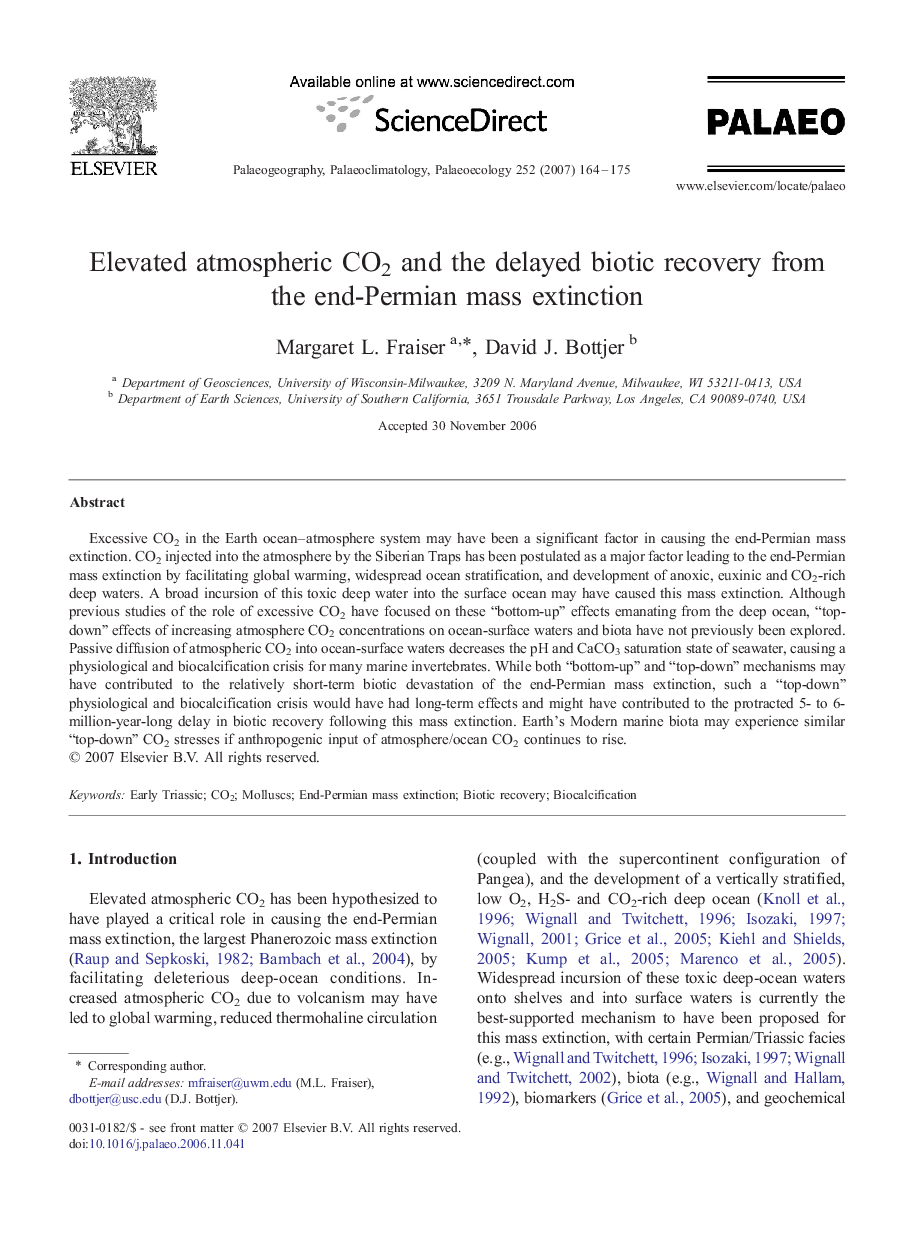| Article ID | Journal | Published Year | Pages | File Type |
|---|---|---|---|---|
| 4468821 | Palaeogeography, Palaeoclimatology, Palaeoecology | 2007 | 12 Pages |
Excessive CO2 in the Earth ocean–atmosphere system may have been a significant factor in causing the end-Permian mass extinction. CO2 injected into the atmosphere by the Siberian Traps has been postulated as a major factor leading to the end-Permian mass extinction by facilitating global warming, widespread ocean stratification, and development of anoxic, euxinic and CO2-rich deep waters. A broad incursion of this toxic deep water into the surface ocean may have caused this mass extinction. Although previous studies of the role of excessive CO2 have focused on these “bottom-up” effects emanating from the deep ocean, “top-down” effects of increasing atmosphere CO2 concentrations on ocean-surface waters and biota have not previously been explored. Passive diffusion of atmospheric CO2 into ocean-surface waters decreases the pH and CaCO3 saturation state of seawater, causing a physiological and biocalcification crisis for many marine invertebrates. While both “bottom-up” and “top-down” mechanisms may have contributed to the relatively short-term biotic devastation of the end-Permian mass extinction, such a “top-down” physiological and biocalcification crisis would have had long-term effects and might have contributed to the protracted 5- to 6-million-year-long delay in biotic recovery following this mass extinction. Earth's Modern marine biota may experience similar “top-down” CO2 stresses if anthropogenic input of atmosphere/ocean CO2 continues to rise.
